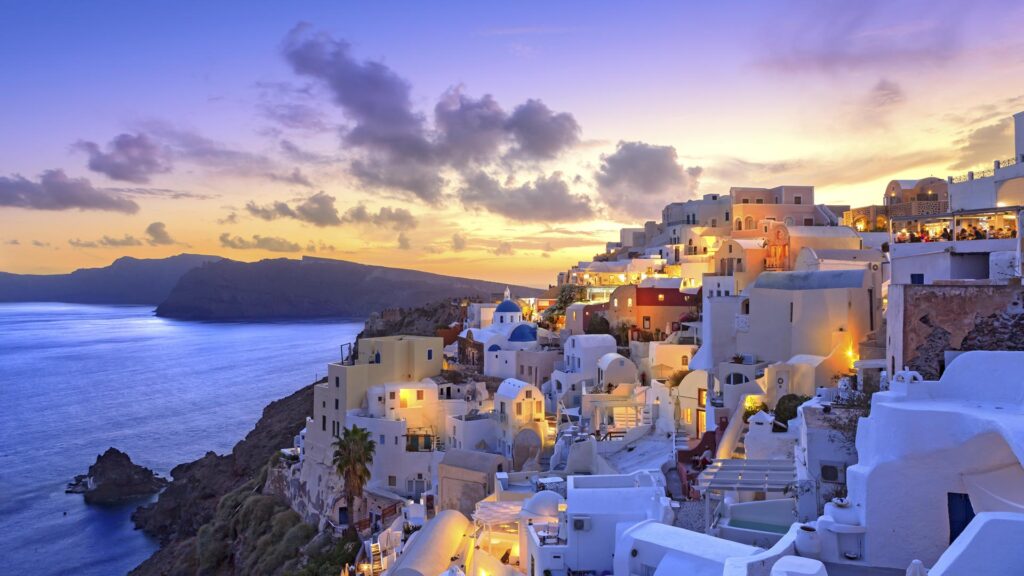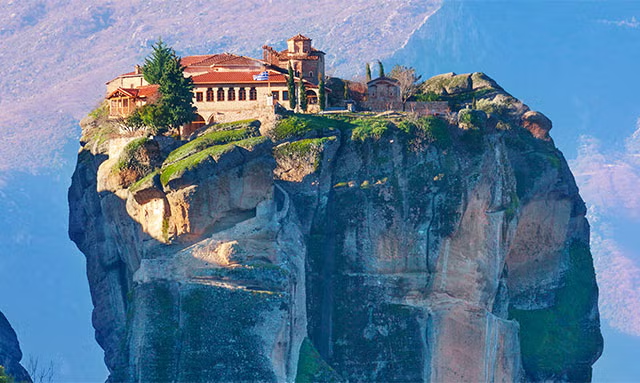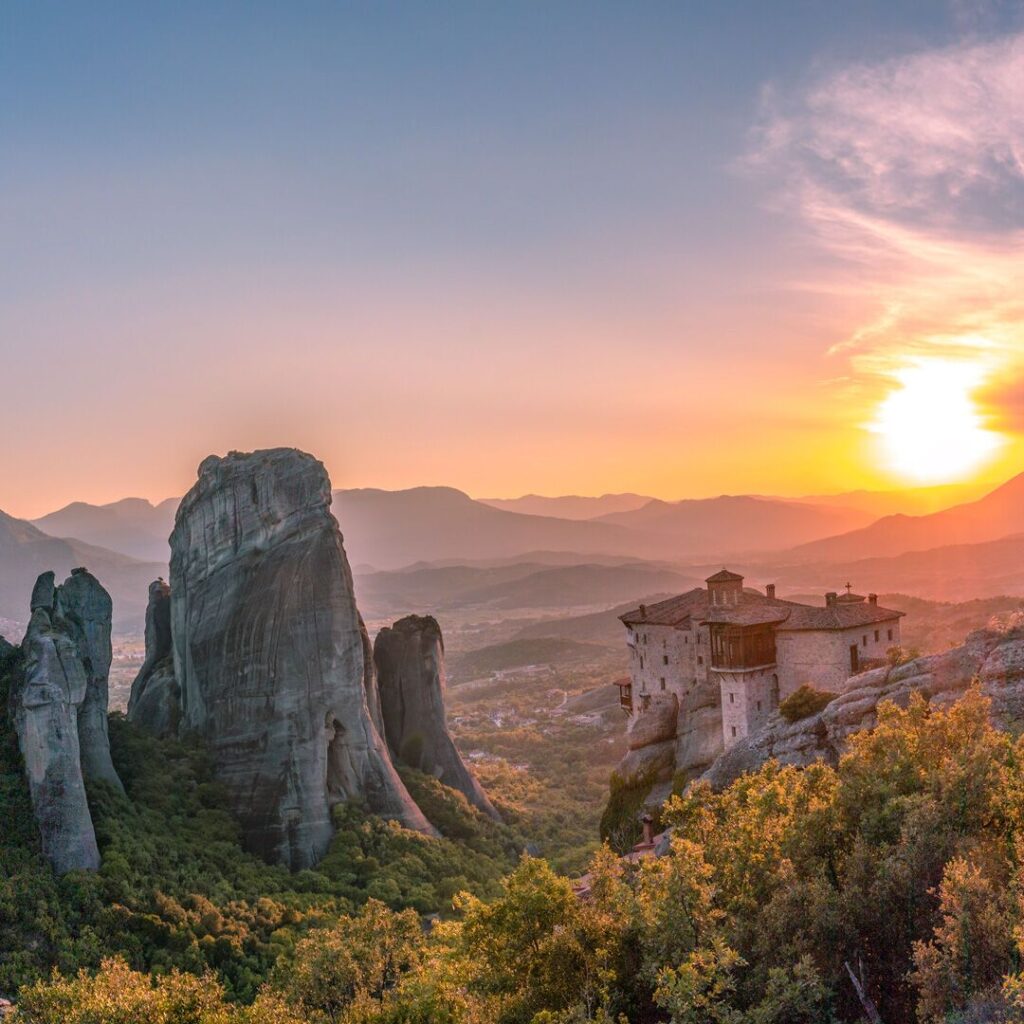This stunning volcanic island boasts the iconic white-washed buildings perched on cliffs overlooking the Aegean Sea. The caldera, formed by a volcanic eruption thousands of years ago, is now filled with azure waters and is one of the most photographed landscapes in the world. Santorini Caldera is the result of a massive volcanic eruption that occurred around 3,600 years ago, shaping the island’s unique landscape. The eruption is believed to have led to the collapse of the center of the island, forming the caldera that we see today. This event is also linked to the legend of the lost city of Atlantis.
The volcanic activity of Santorini has also given rise to natural hot springs, which can be found in the area of Palea Kameni, a small island within the caldera. Visitors can take a boat tour to the hot springs and enjoy a therapeutic soak in the warm waters, surrounded by stunning volcanic scenery.


Despite its volcanic soil and challenging terrain, Santorini has a thriving wine industry known for producing unique varieties such as Assyrtiko, Athiri, and Aidani. Wine enthusiasts can visit the island’s wineries, many of which are located on the caldera cliffs, to sample these distinctive wines while soaking in the stunning views.
Exploring Santorini Caldera by boat is a popular activity, offering a different perspective of the island’s volcanic landscape. Visitors can take boat tours or sunset cruises around the caldera, stopping at various points of interest, including volcanic islands, secluded beaches, and hidden caves.
Santorini’s combination of natural beauty, cultural heritage, and culinary delights makes it a truly enchanting destination that attracts travelers from around the world. Whether you’re seeking romance, relaxation, or adventure, Santorini offers something for everyone to enjoy.

Meteora is also a paradise for outdoor enthusiasts, offering numerous hiking trails that wind through the rocky terrain and lead to panoramic viewpoints. Visitors can explore hidden caves, ancient hermitages, and remote chapels nestled amidst the cliffs, immersing themselves in the natural beauty and tranquility of this unique landscape.
The natural beauty of Meteora is awe-inspiring, with the monasteries perched atop sheer cliffs overlooking a vast expanse of rugged terrain. The landscape changes with the seasons, from lush greenery in spring and summer to golden hues in autumn and snow-capped peaks in winter, providing photographers and nature lovers with endless opportunities for exploration and admiration.
Overall, Meteora is a place of profound beauty, history, and spirituality, offering visitors a glimpse into a world where human ingenuity and faith have converged to create something truly extraordinary.
Meteora, a UNESCO World Heritage Site, is one of the most extraordinary destinations in Greece. Located in the Thessaly region, near the town of Kalambaka, Meteora is famous for its rock formations topped with monasteries that seem to defy gravity.
The monasteries of Meteora were built atop these steep rock pinnacles, originally serving as places of refuge for monks seeking solitude and spiritual contemplation. Constructed between the 14th and 16th centuries, these monasteries played a significant role in preserving Greek Orthodox Christianity and culture during periods of Ottoman rule.

Known in Greek mythology as the home of the gods, Mount Olympus is the highest mountain in Greece. It offers challenging hiking trails and breathtaking views of the surrounding landscape.Mount Olympus, known as “Olympos” in Greek, is the highest mountain in Greece and is renowned in Greek mythology as the home of the Twelve Olympian gods.
Mount Olympus is not only steeped in mythology but also boasts stunning natural beauty. The mountain is characterized by rugged peaks, deep gorges, dense forests, alpine meadows, and cascading waterfalls. The diverse landscape supports a rich variety of flora and fauna, including rare plant species and wildlife such as deer, wild boar, and birds of prey.


Mount Olympus is located in the Olympus Range in northern Greece, straddling the border between Thessaly and Macedonia. It rises to an elevation of 2,917 meters (9,570 feet) above sea level and dominates the surrounding landscape with its impressive stature.
A significant portion of Mount Olympus and its surrounding area is protected as the Olympus National Park, established in 1938. The park is home to diverse ecosystems, rare plant species, and archaeological sites, making it an important conservation area and a UNESCO Biosphere Reserve.
Prepared by: Viktoria Browarna, Maja Nogaj, Julita Buś, Maja Chrzanowska, Aleksandra Latus
II Liceum Ogólnokształcące im. Stefana Żeromskiego w Sieradzu